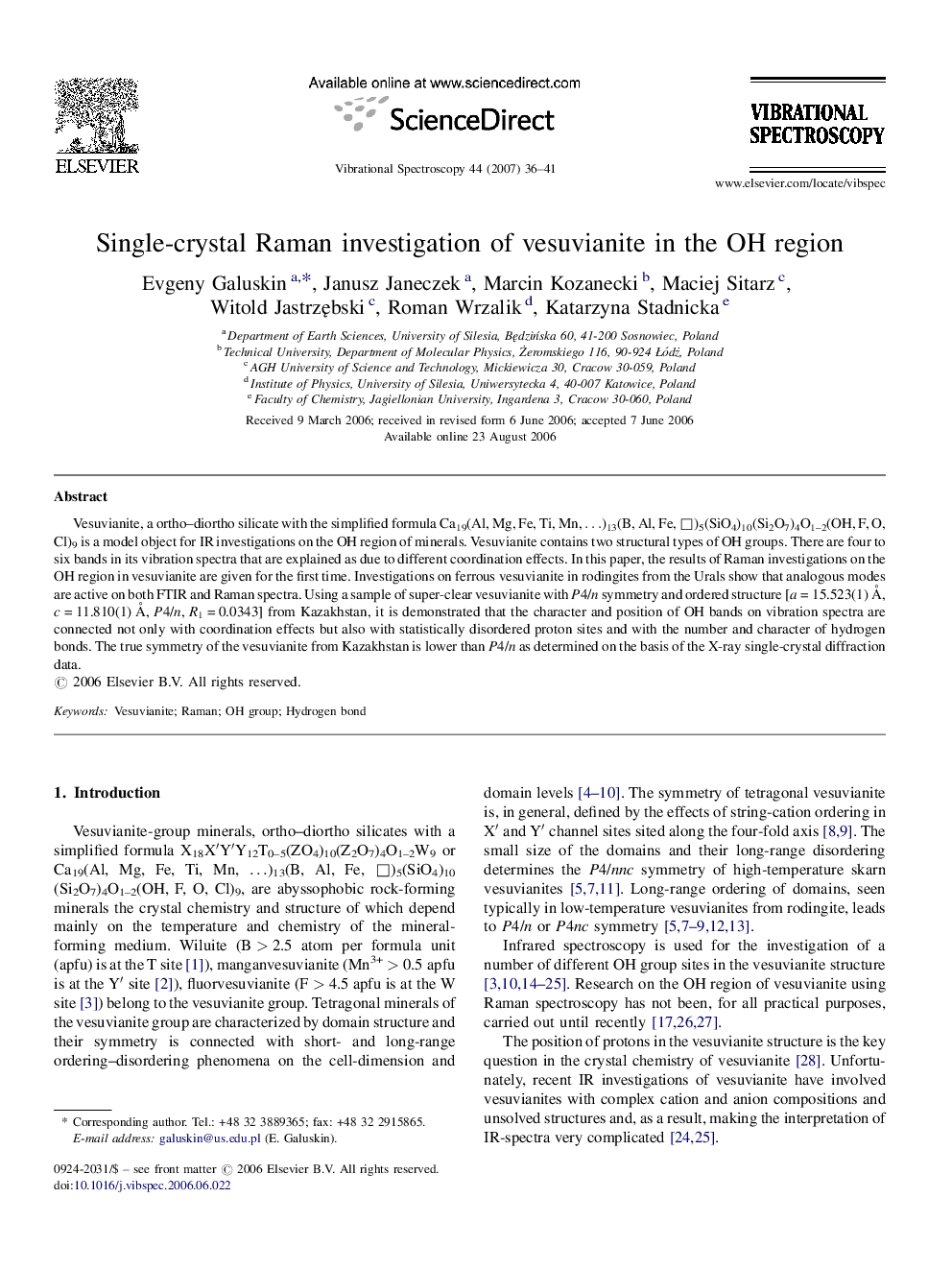| Article ID | Journal | Published Year | Pages | File Type |
|---|---|---|---|---|
| 1250978 | Vibrational Spectroscopy | 2007 | 6 Pages |
Vesuvianite, a ortho–diortho silicate with the simplified formula Ca19(Al, Mg, Fe, Ti, Mn, …)13(B, Al, Fe, □)5(SiO4)10(Si2O7)4O1–2(OH, F, O, Cl)9 is a model object for IR investigations on the OH region of minerals. Vesuvianite contains two structural types of OH groups. There are four to six bands in its vibration spectra that are explained as due to different coordination effects. In this paper, the results of Raman investigations on the OH region in vesuvianite are given for the first time. Investigations on ferrous vesuvianite in rodingites from the Urals show that analogous modes are active on both FTIR and Raman spectra. Using a sample of super-clear vesuvianite with P4/n symmetry and ordered structure [a = 15.523(1) Å, c = 11.810(1) Å, P4/n, R1 = 0.0343] from Kazakhstan, it is demonstrated that the character and position of OH bands on vibration spectra are connected not only with coordination effects but also with statistically disordered proton sites and with the number and character of hydrogen bonds. The true symmetry of the vesuvianite from Kazakhstan is lower than P4/n as determined on the basis of the X-ray single-crystal diffraction data.
